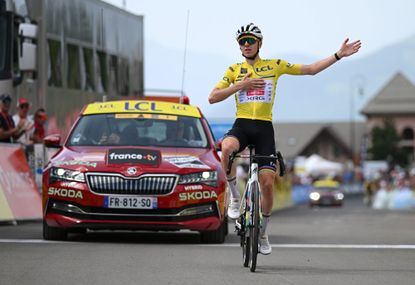Critérium du Dauphiné
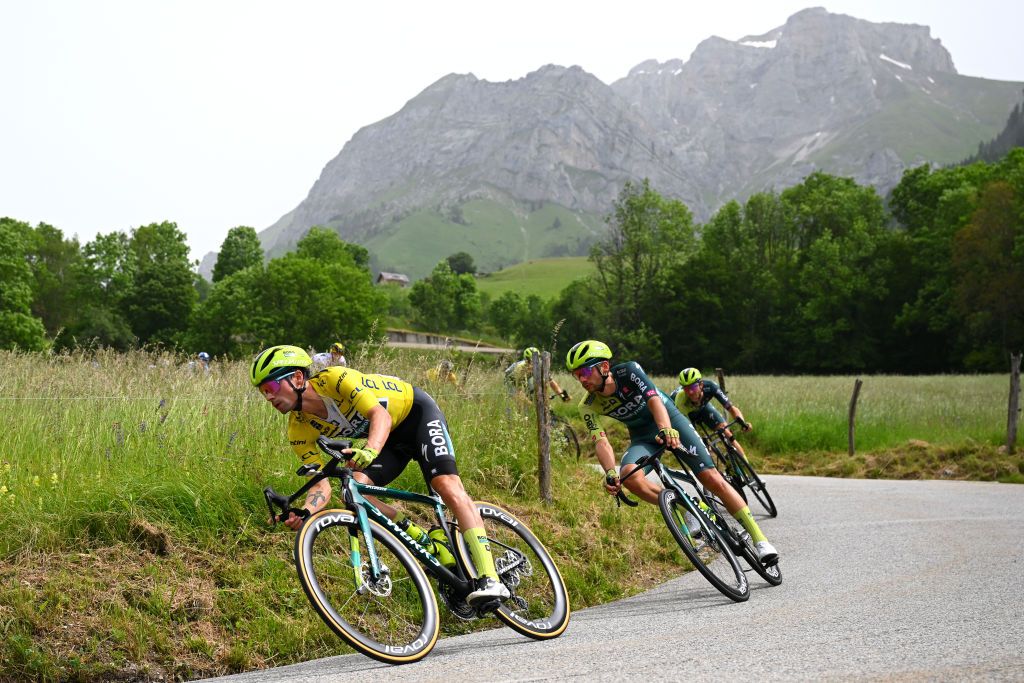
Critérium du Dauphiné 2025: Key Details
| Dates | 8-15 June 2024 |
| Total distance | 1,201.9km |
| Stages | 8 |
| Start | Domérat |
| Finish | Plateau du Mont-Cenis |
| UCI ranking | WorldTour |
| Edition | 77th |
| Total climbing | 174.3km |
| 2024 winner | Primož Roglič (Bora-Hansgrohe) |
| Leader's jersey colour | Yellow |
| TV coverage (UK) | Eurosport/discovery+ |
| TV coverage (US) | TBC |
Critérium du Dauphiné 2025 is the 77th edition of the race, and is being held between June 8 and June 15. Its mountainous terrain and spot in the calendar, just three weeks before the start of the Tour de France, makes it a favourite warm-up race for the major GC contenders.
The race was created in 1947 by the newspaper Le Dauphiné Libéré, and was known as the Critérium du Dauphiné Libéré until 2010, when it came under the control of Tour de France organisers ASO.
Despite its status as one of the key warmup races for the Tour, relatively few riders have won both races in the same year. Chris Froome won both three times, in 2013, 2015, 2016, while Bernard Hinault did the double in 1979 and 1981. Most recently, Jonas Vingegaard won both races in 2023.
Taking place in the Rhône-Alps region in the southeast of France, the eight-day stage race favours climbers, and tends to feature a number of Tour de France climbs including Mont Ventoux and the Col du Galibier. This year the Col de la Madeleine on Stage 7 is the most infamous, with the majority of the toughest climbs packed into that penultimate stage.
Home favourite Romain Bardet is set to retire from road racing at the end of the Dauphiné, so expect some gutsy performances from the veteran Frenchman, while the entire 2024 Tour de France podium - Tadej Pogačar, Jonas Vingegaard, and Remco Evenepoel - are on the provisional start list.
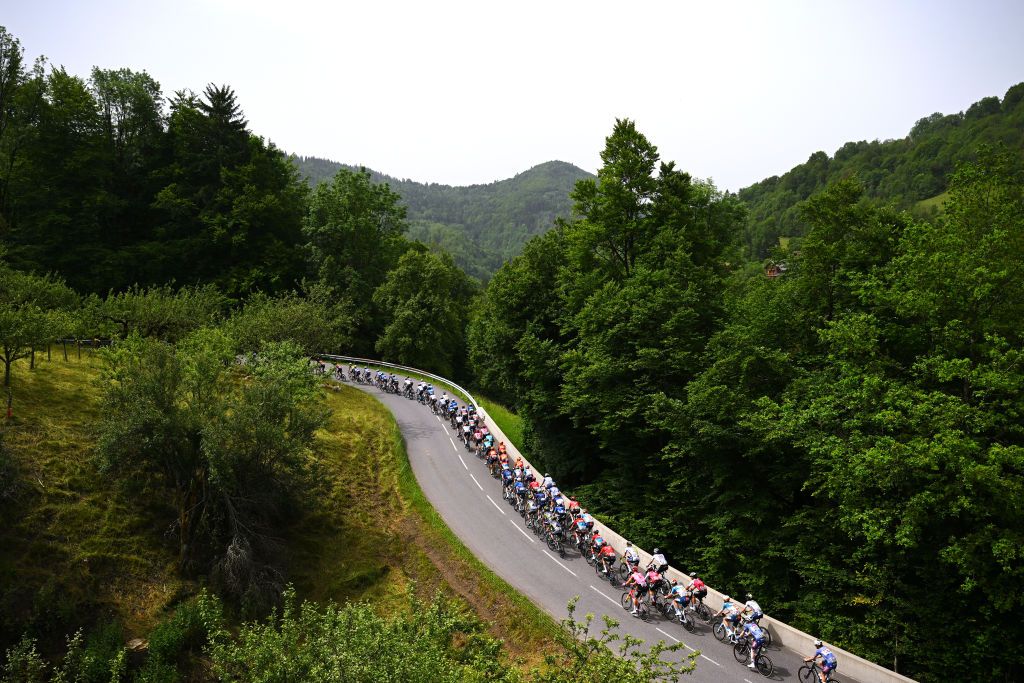
Critérium du Dauphiné 2025: The route
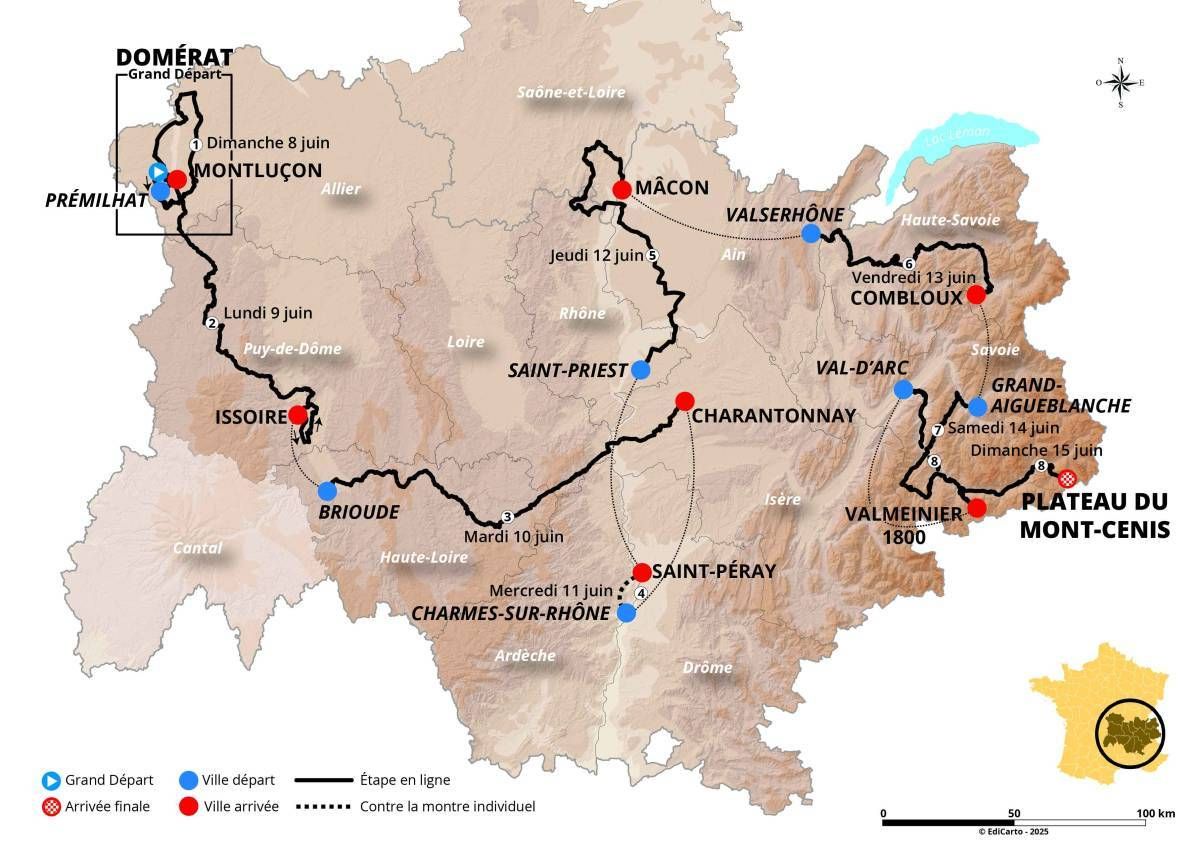
Critérium du Dauphiné 2025 route. Image credit: ASO.
This year the race will begin with a 189km stage from Domérat to Montluçon, in the Allier department, with a bunch sprint likely but some late climbs offering a potential springboard for a puncheur to take the yellow jersey.
Stages 2 and 3 - the latter beginning in Romain Bardet's home town of Brioude - are firmly in puncheur territory, with category 3 and 4 climbs aplenty as well as the odd cat 2. Stage 4 is a zippy 17.7km time trial with a large bump in the middle of the parcours to liven things up and potentially cause problems for the TT specialists.
The hills return on Stage 5, the last possible outing for the sprinters, while Stage 6 is where things start to get serious, with the first Cat 1 climb - the Côte de Mont-Saxonneux - 40km or so from the uphill finish at the Combloux ski resort. From there, it's into the major mountains and the real GC showdown.
The riders will tackle three HC climbs and 4,700m of elevation gain on Stage 7: the 2000m Col de la Madeleine straight out of the gate, the Col de la Croix Fer at the halfway mark, with a summit finish at Valmeinier 1800 to finish.
The final stage is comparatively gentler, with six climbs but only two Cat 1s, including one - the Col du Mont-Cenis - shortly before the finish line at the Plateau du Mont-Cenis.
Critérium du Dauphiné 2025: Stage-by-stage
| Stage | Day | Start | Finish | Distance | Terrain |
|---|---|---|---|---|---|
| 1 | 8 June | Domérat | Montluçon | 189.2km | Hilly |
| 2 | 9 June | Prémilhat | Issoire | 204.6km | Hilly |
| 3 | 10 June | Brioude | Charantonnay | 202.8km | Hilly |
| 4 | 11 June | Charmes-sur-Rhône | Saint-Péray | 17.7km | ITT |
| 5 | 12 June | Saint-Priest | Mâcon | 182.6km | Hilly |
| 6 | 13 June | Valserhône | Combloux | 139.1km | Hilly |
| 7 | 14 June | Grand-Algueblanche | Valmeinier 1800 | 132.1km | Mountains |
| 8 | 15 June | Val-d'Arc | Plateau du Mont-Cenis | 133.8km | Mountains |
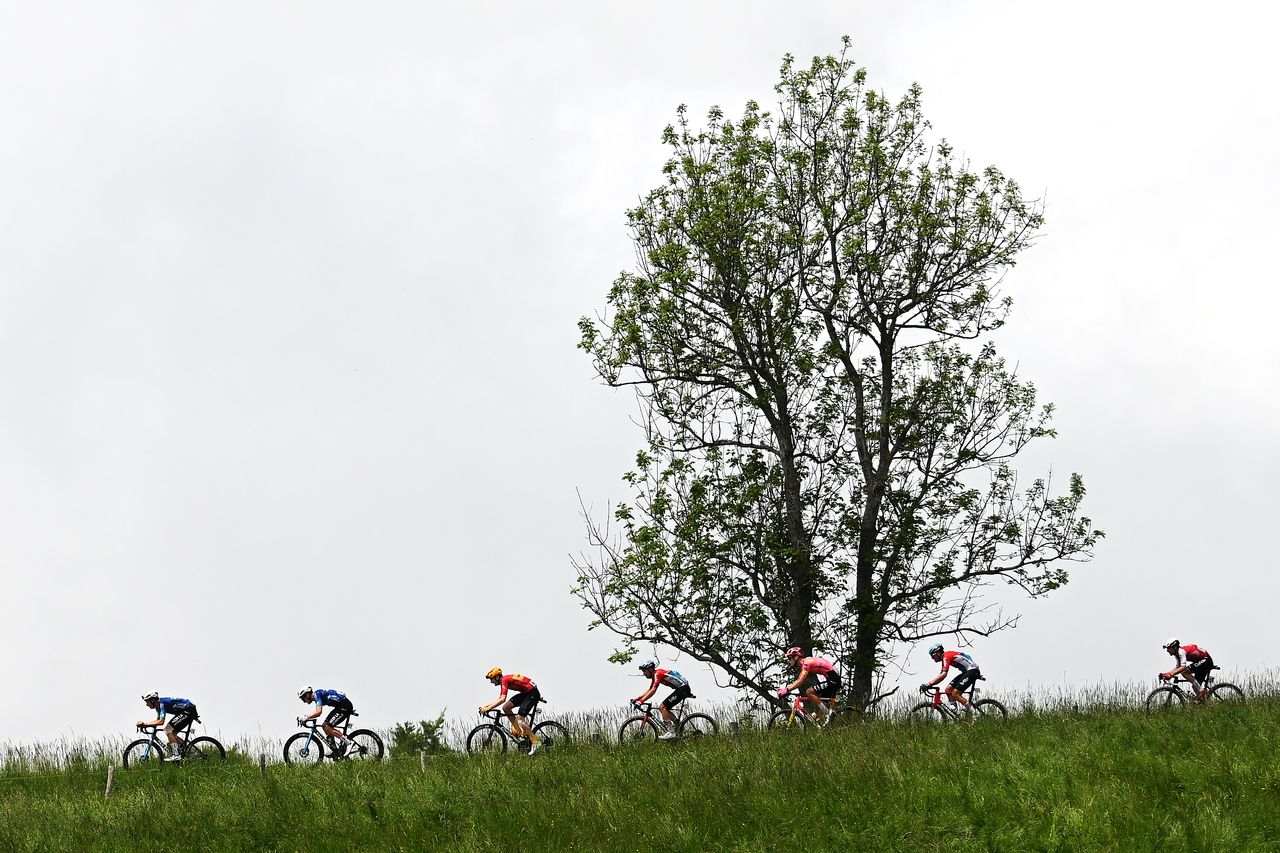
Critérium du Dauphiné: The jerseys
Like at other ASO-run races including the Tour de France, the leader of the race - the rider with the lowest overall time - wears a yellow jersey, the best young rider (aged 25 or under) wears a white jersey, and the points leader (collecting points from sprints) wears a green jersey. The King of the Mountains (rider with the most points over classified climbs) wears a dark blue jersey with white polka-dots, a similar design to that at the Tour de France but with different colours.
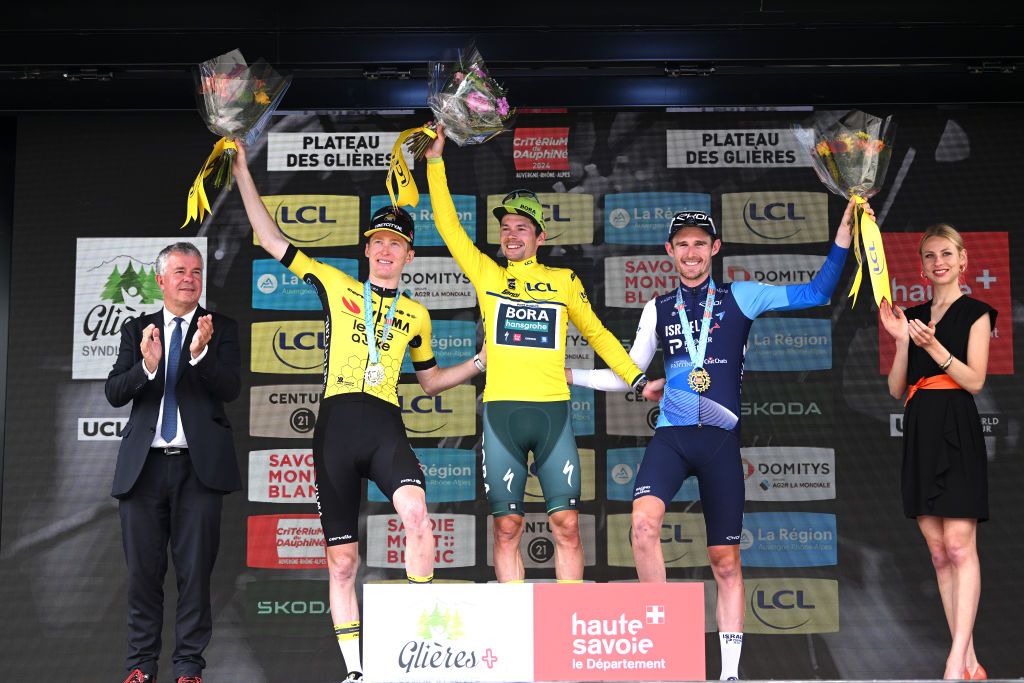
Critérium du Dauphiné: Past winners
2024: Primož Roglič (Slo) Bora-Hansgrohe
2023: Jonas Vingegaard (Den) Jumbo-Visma
2022: Primož Roglič (Slo) Jumbo-Visma
2021: Richie Porte (Aus) Ineos Grenadiers
2020: Daniel Martínez (Col) EF Pro Cycling
2019: Jakob Fuglsang (Den) Astana
2018: Geraint Thomas (GBr) Team Sky
2017: Jakob Fuglsang (Den) Astana
2016: Chris Froome (GBr) Team Sky
2015: Chris Froome (GBr) Team Sky
2014: Andrew Talansky (USA) Garmin-Sharp
2013: Chris Froome (GBr) Team Sky
2012: Bradley Wiggins (GBr) Team Sky
2011: Bradley Wiggins (GBr) Team Sky
-
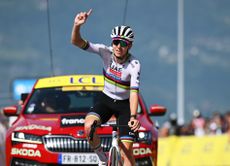
Tadej Pogačar takes yellow jersey at Critérium du Dauphiné with solo victory on stage 6
World champion drops Jonas Vingegaard and Remco Evenepoel on first summit finish
By Tom Davidson Published
-
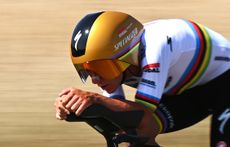
Remco Evenepoel wore a new cutaway visor in the Critérium du Dauphiné time trial - here's the simple reason why
What do you do when your visor keeps hitting your hands? You custom build a new one
By Tom Thewlis Published
-

Remco Evenepoel flies to time trial victory on stage 4 of Critérium du Dauphiné, takes over race lead
Belgian lands early blow against Tour de France rivals with resounding win, Tadej Pogačar loses 49 seconds
By Tom Thewlis Published
-
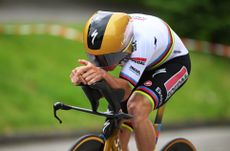
Critérium du Dauphiné stage 4 time trial start times
All the riders' start times – including Remco Evenepoel, Tadej Pogačar and Jonas Vingegaard – for Wednesday's race against the clock
By Tom Davidson Published
-
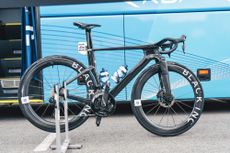
Factor's unreleased aero bike is outrageous - but we should've seen this design coming
Wide forks are a common sight on the track. Will their success transfer over to the road?
By Tom Davidson Published
-

Iván Romeo powers to first WorldTour victory and race lead on stage three of the Critérium du Dauphiné
21-year-old Spaniard capitalised on hesitation amongst a 13-man breakaway to jump clear and take the win in Charantonnay
By Tom Thewlis Published
-
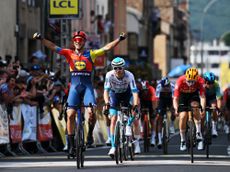
Jonathan Milan outsprints Fred Wright and Mathieu van der Poel to win stage two of the Critérium du Dauphiné
Fred Wright takes second for Bahrain Victorious in Issoire as Van der Poel completes top three
By Tom Thewlis Published
-
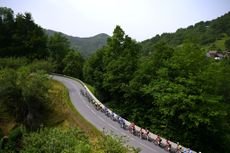
How to watch the Critérium du Dauphiné 2025: Everything you need to live stream this Tour de France warm-up race
All the information on broadcasters and live streams for the Critérium du Dauphiné from Sunday June 8 to Sunday June 15 as the world's best riders get ready for the Tour de France
By James Shrubsall Published
-
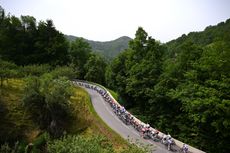
Tadej Pogačar, Jonas Vingegaard and Remco Evenepoel set to clash across mountainous week - everything you need to know about the Critérium du Dauphiné
The Tour de France warmup race is a tantalising prospect in its own right
By Adam Becket Published
-
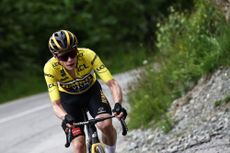
Jonas Vingegaard confirms race schedule ahead of Tour de France
Danish climber will only ride the Critérium du Dauphiné in June, but will take part in two altitude camps
By Tom Thewlis Published
-
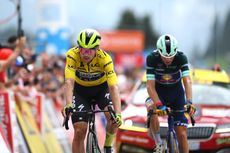
Primož Roglič seals the overall victory at the Critérium du Dauphiné after late scare on the Plateau des Glières
Carlos Rodríguez wins the final stage of the race with an attack on the climb to Plateau des Glières
By Joseph Lycett Published
-
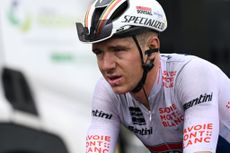
Remco Evenepoel struggles for form in the mountains as Primož Roglič affirms Tour de France favourite status
'The shape is just not there' says Soudal - Quick-Step leader, while Roglič on track for Tour success after two stage wins at Critérium du Dauphiné
By Dan Challis Published
-
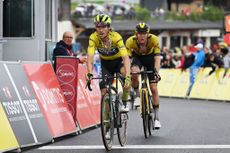
Primož Roglič victorious in brutal Critérium du Dauphiné queen stage
Bora-Hansgrohe leader sprints to win atop Samoëns 1600 ahead of Matteo Jorgensen and Giulio Ciccone
By Dan Challis Published
-
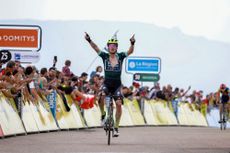
Primož Roglič blitzes his rivals to win stage six of Critérium du Dauphiné and take over the race lead
Slovenian outsprinted Giulio Ciccone in the final kilometre of the summit finish at Le Collet d'Allevard to take over the yellow jersey from Remco Evenepoel
By Tom Thewlis Last updated
-
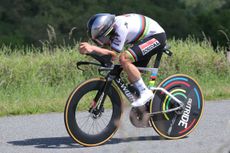
'A good sign towards the Tour de France': Remco Evenepoel takes time trial victory at Critérium du Dauphiné
World champion takes first victory since he was involved in Itzulia horror crash
By Adam Becket Published
-
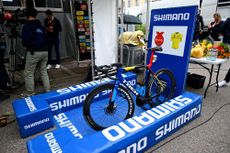
Trek keep the guessing game going with 'Madone/Émonda' at Critérium du Dauphiné
The bike ridden by Lidl-Trek riders at the Tour de France warm-up race features both model names
By Tom Thewlis Published
-
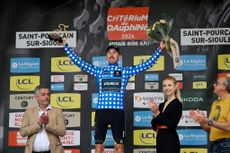
'It was a nice first day, but definitely took a bit out of the legs' - Mark Donavan on his day out in the breakaway at the Critérium du Dauphiné
The British rider leads the mountains classification after the opening stage of the race
By Joseph Lycett Published
-
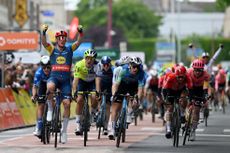
Mads Pedersen sprints to victory on stage 1 of the Critérium du Dauphiné
The Lidl-Trek rider outsprinted Sam Bennett to win the opening stage and take the first maillot jaune of the race
By Joseph Lycett Published
-
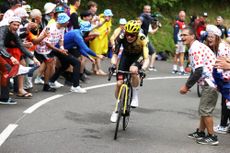
Chords to cols: How Jonas Vingegaard went from guitars to Grand Tours
If he'd followed a music teacher's advice the 2022 Tour de France winner might have ended up starring on a different type of stage
By Tom Thewlis Published
-

Roll on the Tour de France: Jonas Vingegaard ready after dominant Critérium du Dauphiné win
Tadej Pogačar is seemingly the only man in the world in between the Dane and a second Tour title
By Adam Becket Published
-
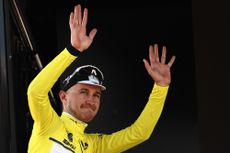
From doubts to a first pro win: Mikkel Bjerg takes stage four and yellow jersey at Critérium du Dauphiné
Jonas Vingegaard most impressive of general classification contenders on hot day in the Loire
By Adam Becket Published
-
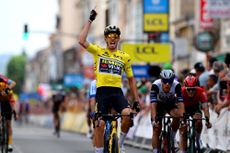
Christophe Laporte doubles up at Critérium du Dauphiné with 'unexpected' stage three win
Frenchman proves his form and outfoxes Sam Bennett and Dylan Groenewegen to take second stage victory in three days
By Tom Thewlis Published
-
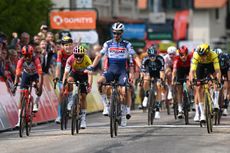
‘I surprised myself’ - Julian Alaphilippe back to winning ways on stage two of Critérium du Dauphiné
Former world champion rediscovers form ahead of the Tour de France
By Tom Davidson Published
-
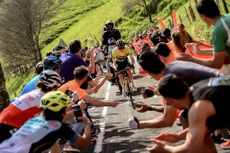
Jonas Vingegaard to David Gaudu: Eight riders to watch at the Critérium du Dauphiné 2023
Stacked GC field also includes Adam Yates, Richard Carapaz, Mikel Landa and Jai Hindley
By Tom Thewlis Published
-
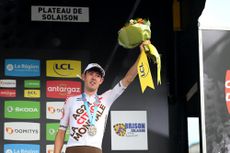
After 'fighting with the best guys', Ben O'Connor is proud of his Critérium du Dauphiné podium
Australian heads into Tour de France with best WorldTour stage result in his pocket
By Adam Becket Last updated
-
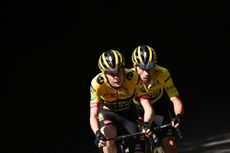
Can anyone stop the Jumbo juggernaut? Five talking points from the Critérium du Dauphiné
Wout van Aert and Primož Roglič are the best at the French race, but the Tour de France is another level up
By Adam Becket Published
-

Jonas Vingegaard wins stage eight of the Critérium du Dauphiné as Roglič triumphs on GC
It was a dominant display from the Jumbo Visma pair who crossed the line hand in hand and secured a 1-2 on GC
By Adam Hart Published
-
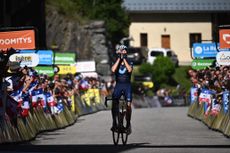
Carlos Verona holds off Primož Roglič to win stage seven of the Critérium du Dauphiné
Verona proved to be the strongest rider in the breakaway as he time-trialled up the final climb to victory
By Adam Hart Published
-
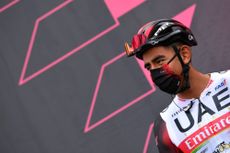
A 'dangerous mistake' — Juan Sebastián Molano disqualified from Critérium du Dauphiné for hitting Hugo Page
Colombian sprinted thrown out of race after striking Frenchman on camera late on Friday's stage
By Adam Becket Published
